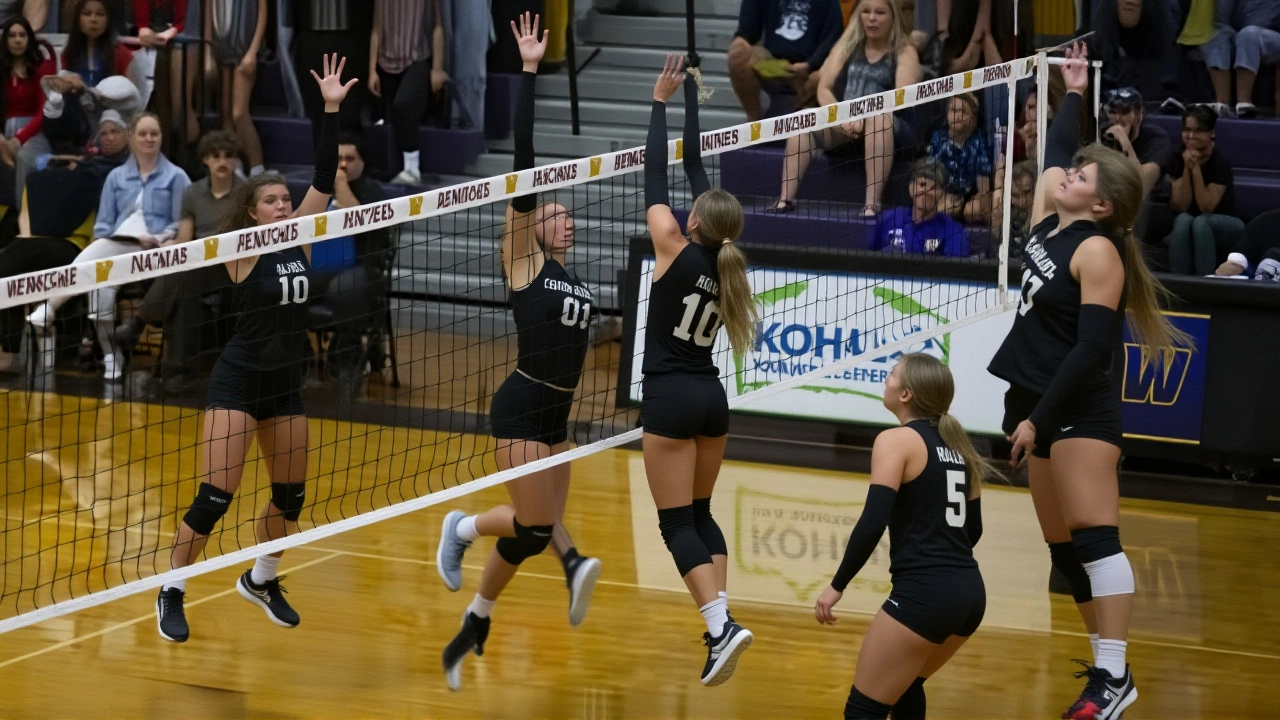On Sunday, November 30, 2024, the Oregon State Beavers didn’t just beat the UC Davis Aggies—they sent a message. A 90-57 thrashing at Gill Coliseum in Corvallis, Oregon wasn’t just a win; it was a statement. The Beavers, now 3-0 in non-conference play, looked every bit the team that would go on to finish first in the West Coast Conference (WCC). The Aggies? They never stood a chance.
Home Court Dominance
For the third straight game, Gill Coliseum—a 9,602-seat arena tucked into the quiet campus of Oregon State University—felt like a fortress. The Beavers opened the season with a 94-58 win over Western Oregon on November 12, followed by a 70-51 victory against Cal State Fullerton on November 15. Both games were played right here, at 100 Gill Coliseum, Corvallis, OR 97331. Against UC Davis, they didn’t just continue the streak—they amplified it.
The final margin? 33 points. That’s not just a win. That’s a dismantling. Oregon State shot 52% from the field, dished out 21 assists, and forced 18 turnovers. The Aggies, representing the University of California, Davis (1 Shields Avenue, Davis, CA 95616), managed just 34% shooting and were outrebounded 41-29. They looked out of sync from the opening tip.
Building Momentum Before Conference Play
This game wasn’t just about padding the record. It was about timing. Oregon State had just lost their conference opener to the University of Oregon Ducks on November 21—a heartbreaking 78-75 defeat that rattled some fans. But instead of spiraling, they doubled down. The UC Davis win came eight days later, a perfect reset button.
Head coach Wayne Tinkle had spent the preseason preaching patience and defensive discipline. After the Oregon loss, he didn’t change the system—he tightened it. The Beavers held UC Davis to 17 points in the first half. The Aggies didn’t crack 20 until the 12-minute mark of the second half. That’s not luck. That’s execution.
Turns out, non-conference games aren’t just tune-ups—they’re identity builders. Oregon State’s schedule, which included wins over Evansville, Vermont, and Southern Utah before this game, was designed to test depth and chemistry. Against UC Davis, they showed both.

Who Stepped Up?
It wasn’t just one player. It was a collective. Junior guard Anthony Smith led the team with 21 points, hitting four three-pointers and playing lockdown defense. Freshman forward Malik Johnson, a 6’8” transfer from junior college, added 14 points and 9 rebounds, showing why he’s already a starter. And then there was senior point guard Jalen Hill, who quietly dished out 8 assists and only turned the ball over once.
UC Davis didn’t have a single player score more than 12. Their leading scorer, guard Diego Guevara, went 3-for-13 from the field. The Aggies’ bench scored just 14 points total. It was a textbook case of a team that’s still finding its rhythm facing one that’s already locked in.
What This Means for the WCC Race
Oregon State’s 3-0 non-conference start was more than just a feel-good stat. It set the tone for their entire season. By the time they faced Gonzaga Bulldogs in January, they weren’t just hopeful—they were confident. That confidence carried them to a 14-4 WCC record and a conference title, the first for the Beavers since joining the league after the Pac-12’s collapse.
The win over UC Davis was the quiet spark. No national headlines. No ESPN highlight reel. Just a 33-point beatdown in a packed but unheralded gym in Corvallis. Yet, it was the game that proved Oregon State belonged in the upper tier of the WCC.
They’d go on to lose to North Texas in Denton on November 25, 58-55—a sobering reminder that road games are different. But back home? Gill Coliseum became a nightmare for visitors. The Beavers finished the season 12-1 at home.

Looking Ahead
By February, Oregon State was ranked in the Top 25 for the first time since 2018. Their win over UC Davis didn’t make the national news, but it was the foundation. Without that 33-point statement game, would they have had the swagger to beat Saint Mary’s in overtime? Would they have held off San Francisco in the WCC tournament final? Maybe not.
Non-conference games often get forgotten. But this one? It mattered.
Frequently Asked Questions
How did Oregon State’s non-conference schedule prepare them for WCC play?
Oregon State faced a mix of mid-major and upper-tier non-conference opponents—including Evansville, Vermont, and Cal State Fullerton—that tested their defense, depth, and composure. The 3-0 home record built confidence, while the narrow loss to North Texas exposed road weaknesses. This balance helped them adapt quickly when WCC play began, especially against physical teams like Saint Mary’s and Gonzaga.
Why was the 90-57 win over UC Davis significant despite being a non-conference game?
It was Oregon State’s most dominant performance of the early season, showcasing their defensive identity and depth. The 33-point margin was the largest of their non-conference slate and proved they could dominate teams with different styles. That win gave them psychological momentum heading into the WCC, where every game is a battle.
What role did Gill Coliseum play in Oregon State’s success?
Gill Coliseum’s intimate size and loud student section created a hostile environment for visitors. Oregon State went 12-1 at home in 2024-25, and their non-conference wins over Western Oregon, Cal State Fullerton, and UC Davis all came there. The arena’s energy became a weapon, especially during tight moments in conference play.
How did UC Davis’ performance compare to their other games that season?
The 57-point outing was UC Davis’ lowest-scoring game of the season and their second-worst loss. They averaged 72 points per game in Big West play and had beaten Cal Poly and UC Riverside by double digits earlier that month. The Beavers’ defense simply overwhelmed them, exposing gaps in their offensive rhythm and depth.
Did this win impact Oregon State’s NCAA Tournament chances?
Absolutely. The win over UC Davis was part of a strong non-conference resume that helped offset their early loss to Oregon. Combined with later wins over Gonzaga and Saint Mary’s, it gave the selection committee confidence in Oregon State’s ability to compete with top teams. They earned a No. 11 seed in the NCAA Tournament—their first appearance since 2021.
What was the significance of Oregon State joining the WCC before the 2024-25 season?
After the Pac-12 dissolved, Oregon State joined the WCC to ensure stability in scheduling and revenue. The move was controversial—many fans worried about the drop in competition. But the Beavers used the non-conference slate to prove they belonged. Their win over UC Davis was one of the first signals they could compete, not just survive, in their new conference.

